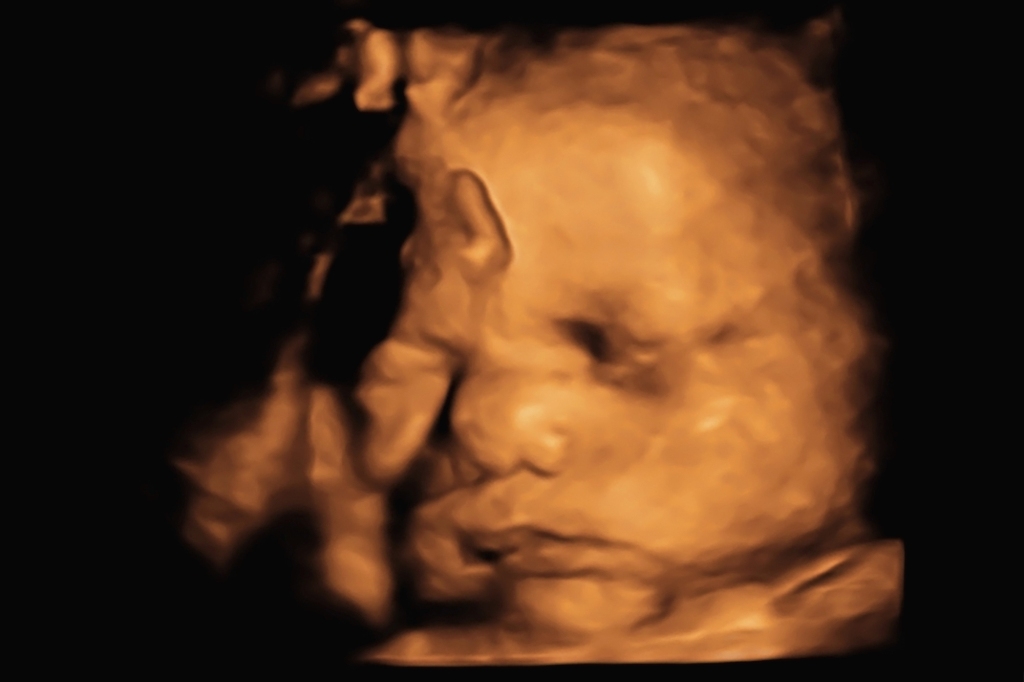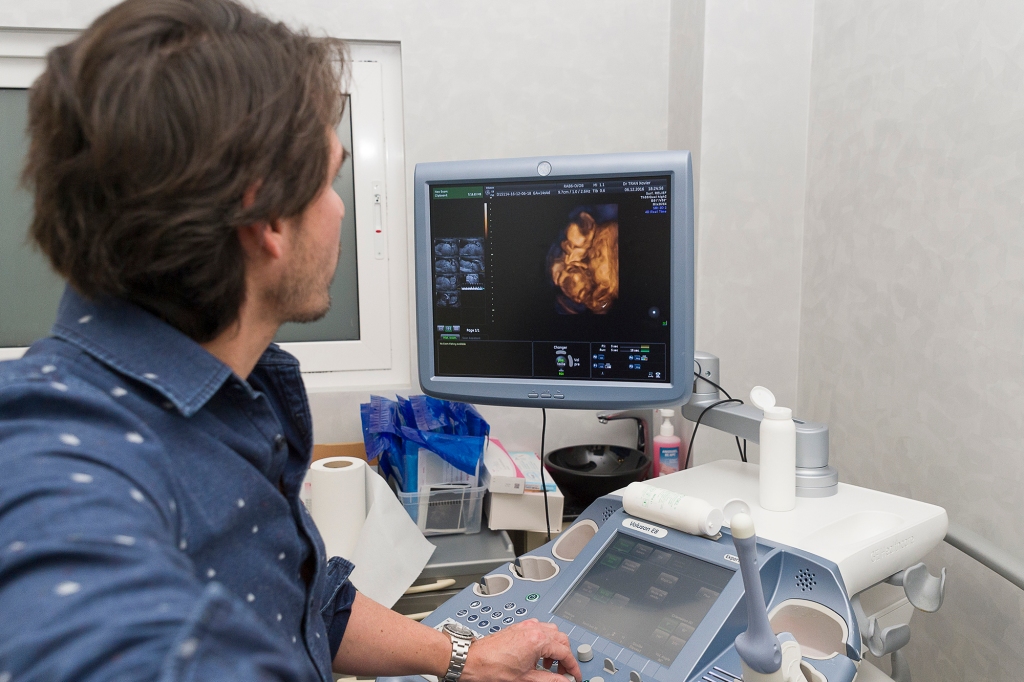How next-gen ultrasounds are changing the abortion debate
“The ultrasound just made it feel a lot more real,” Sarah* recalled. “When I first heard my son’s heartbeat, there was an immediate attachment to the idea of him.”
Five years ago, when she was 27 years old, Sarah realized she was pregnant. Immediately, she knew she had a difficult choice before her. Her relationship with her boyfriend of five years was shaky at the time, and he was strongly in favor of her terminating the pregnancy.
“We were kind of in an on-and-off situation at the time, which is why I was heavily considering abortion,” she told the Post. “I wasn’t confident enough in our relationship to have a child with him, so I was in a chapter of my life where abortion was just my go-to.”
But in her search for a medical professional who could confirm she was pregnant, Sarah — who lacked health insurance at the time — decided to schedule a free ultrasound while still in her first trimester. “It started with me just kind of googling free ultrasounds, and then it turned into a whole thing, with me making a decision to keep the pregnancy right there on the spot.”
Sarah, who’d had an abortion a year prior, realized as soon as she saw the baby on the screen that she wanted to go through with this pregnancy.
“I was feeling guilty about doing it again, under a very similar situation,” she recalled. “But because I had an ultrasound, I decided to have my son. It had only been a year [since my last abortion], so the universe was telling me I was going to be a mother — and that I was going to do it with or without the father.”
Today, ultrasounds are more advanced than ever. Gone is the era of the traditional, black and white, grainy 2D images. Now, through 3D, 4D, and HD ultrasounds — which were developed and entered commercial use in the 1990s — women are able to access clear, photo-quality images of fetuses and even video footage of the fetus’ movement.
These technological advances make detecting birth defects and abnormalities easier for medical professionals. They also are enabling women to come face to face with the tissue, organs, anatomy, and even the individual facial features of the fetus growing inside of them.

Such advancements not only dazzle, but allow future parents to more intimately connect to their pregnancy’s progression. And according to GOP pollster Wes Anderson, this is having a meaningful impact on sentiments about abortion—not just for mothers considering them like Sarah, but also for the public as a whole.
Anderson, who has 28 years of experience as a pollster, spent the last 16 months conducting more than a dozen intense focus groups with American voters about abortion. He says he’s noticed a discernible shift in the conversations about the issue, thanks to improvements in ultrasound technology.
“The conversation has changed because of the advancement of medical imagery more than anything else,” he told the Post. “It sounds overly simplified, but it’s not. Ultrasounds are actually the driver.” Over the past several decades, Anderson says the conversation has shifted away from whether a fetus is just a clump of cells toward a more nuanced cost-benefit analysis.
“The focus groups kept bringing up ultrasounds — and the refinement of ultrasounds and 3D ultrasounds—and they just said, ‘Well, that’s a baby,’” Anderson explained. “The science of imaging has moved to a point where your average voter now says, ‘I’m not going to argue over whether that’s a baby. I know it’s a baby. Now, let’s talk about how we balance all this out, and balance that with the rights of the mother.’”

In the focus groups, Anderson observed a clear demographical pattern among those who were swayed by advancements in ultrasound technology. Although 67% of Americans aged 18 to 29 believe that abortion should be legal in most or all instances (the highest proportion of any demographic), Anderson says the people who cite ultrasounds as a reason they question the ethics of abortion tend to be young women.
“The people who are consistently wrestling with this phenomenon more than anyone else are women under the age of 40 in particular,” he said. “We found that women over 40 had long since made a decision on whether they were pro-life or pro-choice, and they were less likely to be swayed by this technology. But younger women are struggling mightily with that.”
Indeed, this generation of young women grew up seeing ultrasounds taped to the refrigerators or posted on the Instagram pages of proud expecting mothers. Now that they’re seeing 3D and 4D imaging, it’s no wonder the argument that a fetus is “just a clump of cells” seems to be losing its credibility.
• • •

This shift in sentiment could not be more timely. Since the demise of Roe v. Wade last June, intense scrutiny has been placed on remaining abortion options still offered at the state level. South Carolina Sen. Lindsay Graham, for instance, recently introduced a new bill that would outlaw all abortions after the 15th week nationwide. This is well before New York State’s current regulations, which limit abortions after the 24th week, just after the point babies can survive outside of the womb — known as the “threshold of viability.”
Amid this ongoing and heated debate, the ability of ultrasounds to change minds on abortion is being harnessed by pro-life activists, including local ones. In May 2019, for instance, a live 4D ultrasound was performed in Times Square and projected on a large screen for the “Alive in New York” gathering. The spectacle, co-sponsored by the March for Life and Focus on the family, attracted a crowd of more than 400.
Entire organizations have even been launched to disseminate ultrasound technology, like the 501 c(3) organization Project Ultrasound, which educates the public about the effectiveness of ultrasounds in deterring abortion. They also donate money to non-profit pregnancy centers so they can purchase ultrasound machines.
‘The conversation has changed because of the advancement of medical imagery more than anything else.’
Wes Anderson
“Ultrasounds make the pregnancy real,” Danielle Pitzer, content producer for the pro-life organization Focus on the Family, told the Post. “When a woman has an unexpected pregnancy, there can be a lot of fear… [but] an ultrasound cuts through the noise, the fear, the ‘what ifs’ and helps a woman see the life inside her.”
Like Project Ultrasound, Focus on the Family provides pregnancy centers with grants to purchase 3D and 4D ultrasound machines through their Option Ultrasound Program. “We are investing in these machines because a more precise image and discernible heartbeat makes a huge difference,” Pitzer said. “The human embryo develops and grows, but they are already human, and one way for us to see and believe that fact is through the power of ultrasound image.”
And even legislators have taken notice of the power of ultrasounds to dissuade women from getting abortions. Since the mid-1990s, a variety of laws have been passed to ensure that more women looking to terminate their pregnancy have an ultrasound before making that decision.

According to the pro-choice Guttmacher Institute, 13 states currently have laws in place requiring medical professionals provide abortion patients with verbal counseling or written materials that include information on how to access ultrasound services. Additionally, 27 states go as far as to regulate how abortion providers provide ultrasounds.
Of those states, 10 require an ultrasound be carried out, and eight require would-be mothers have the opportunity to see the image. Six go as far as to mandate that women seeking abortion are given an ultrasound and that the image is both shown to them and described to them.
But several studies have called into question just how effective these laws really are at reducing abortion rates.
Take Wisconsin, which in 2013 enacted a law requiring abortion providers display and describe ultrasound images. An analysis of 5,342 medical charts found that there was an increase in Wisconsin women originally seeking abortion who ultimately went through with their pregnancies, albeit a very small one. The study’s authors note a “statistically significant but small increase in continuing pregnancy rates”—from 8.7%to 11.2% — but conclude that “the majority of women were certain of their abortion, and the law did not change their decision.”

A 2014 study of 15,575 medical charts of women who received an ultrasound at an abortion provider in Los Angeles had similar results. Some 42.5% of them chose to see the image, with 98.4% going on to terminate their pregnancies. The remaining 1.6% who decided not to receive an abortion all reported medium or low certainty in their decision to terminate the pregnancy in the first place.
Many pro-choice advocates have fiercely criticized legislation that interferes in the provision of ultrasounds. That includes the Guttmacher Institute, which notes on its website that ultrasounds are not considered medically necessary for many abortions and dubs these laws “a veiled attempt to personify the fetus and dissuade an individual from obtaining abortion.”
The American Congress of Obstetricians and Gynecologists has similarly expressed opposition to these laws. “Absent a substantial public health justification, government should not interfere with individual patient-physician encounters,” they write. “Laws that require physicians to give, or withhold, specific information when counseling patients… are ill-advised.”
• • •
More than one-half decade since an ultrasound changed the course of her life, Sarah and her son are living happily together—and his father has even become involved in an amicable co-parenting arrangement. “I’m not going to pretend that it wasn’t hard or that I didn’t struggle, but my son and I are in a great place,” she said. “Everything turned out as it should have.”
But, even though her ultrasound changed her own mind, Sarah sides with the skeptics who say that might not be the case for other women. “In the end, my choice was very circumstantial. I think every woman who is considering an abortion really has her mind set on what she’s leaning towards.”
* Names in this story have been changed at the request of the subject
Read the full article Here


